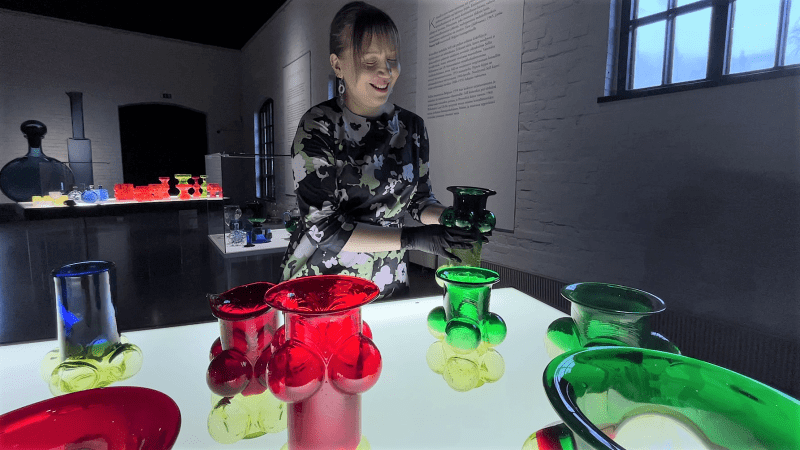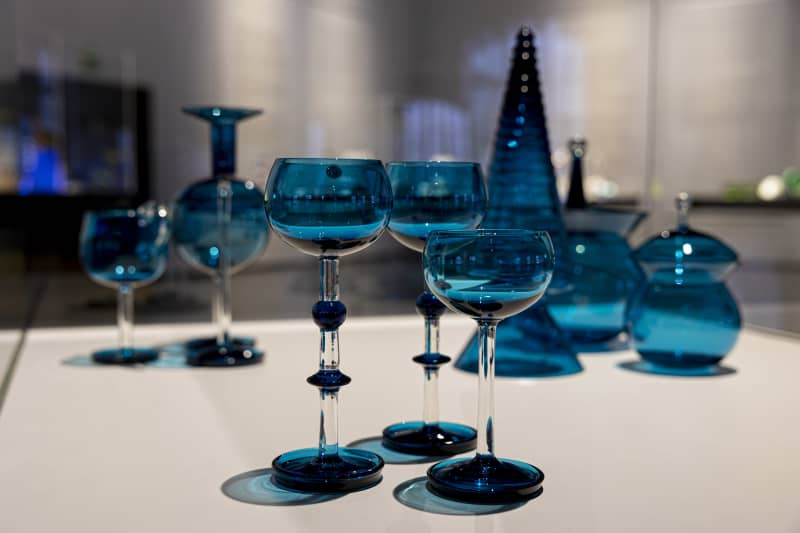An exhibition at the Finnish Glass Museum adds to the popularity of design diva Nanny Still. At the same time, the prices of the works are rising. Collectors like Still’s style and colours because she stands out from the crowd.
– “People ask for Flindari carafes and they keep coming,” says the entrepreneur.
Flindars are sold online for between €120 and €170, depending on size and colour.
– Of course, prices rise when the newspapers write about them and beautiful objects are presented in the media. Then demand goes up and prices go up with it.

In Finnish homes, you can still find a lot of utility glass designed by Still, such as the rough-surfaced *Kehrä* series and the heavy and colorful *Grapponia* series. The lemon yellow version even glows because it has some uranium in it.
– The drinking glasses of the series are around 15 euros, and the price of the glass is a little under a hundred, as well as the pitcher. The Grapponia flower vase is the most popular in different colors and costs at least 100 euros. These can also be found at flea markets, reminds Pertti Mäkelä.
“Nanny Still is a phenomenon among collectors”
The spring *Still Life* exhibition of the Finnish Museum of Glass in Riihimäki presents the designer’s entire career from the end of the 1940s to the beginning of the 2000s. The strong-willed and creative woman was the designer who designed the most glass for Riihimäki glass.
The last time the museum presented Still’s production was in 1996. Now there is clearly a renewed interest in the decorative and colorful glass created in Still’s best creative period.

Glass has taken over a place in art, design and interior design magazines anyway. Antique, vintage and retro goods fairs have served as wake-ups.
Kivelä also speculates that the popularity of the glass has increased nostalgia and interest in the belongings of parents or grandparents.
Still did not want to repeat the simple, elegant and quiet art of the gentlemen.
– Nanny considered it to be poverty-stricken. That’s not how Paris is conquered. He preferred to make something rich and rich, Kivelä explains.

Nanny Still’s time also coincided with the rise of magazines and Finnish celebrity culture. Nanny took full advantage of it. She was a spectacular woman, a diva dressed to the last detail, who was happy to pose for the cameras with her own products in her hands.
– Nanny consciously took on the role of a public diva and was able to sell her own brand through that, Hanna Kivelä thinks.
Still may still find a Still’s box of valuables in homes
– What appeals to me the most in Still’s design and work is the whole. His spirit seems to be present in all of them. If you put objects from different decades next to each other, they somehow talk to each other, Kaukoranta describes.
He reminds that glass objects designed by Still can still be found in homes, as many of his works are not marked or signed in any way.
Kaukoranta shares a lot of pictures and information about Stilli’s production on social media.
Series like the *Tzarina series* (produced in 1963–1964), the *Sultan* (1967–1969) that took shapes from the Islamic world, and the *Kukkukusets in the Neptuna series*, which look like glass firs, seem to be popular with collectors.

Harlequin series became known as highly degradable
Pertti Mäkelä, an entrepreneur who knows Riihimäki’s glass production well, thinks that the narrow and tall decorative bottles designed in the mid-1950s are the ones that many people know Still from. Bottles are sold.
– Demand has risen again and prices have started to rise. At the lowest point, you have to shell out about 350 euros for them. The ruby \u200b\u200bred goes for 500-700 euros, depending on the shade.
Finally, antiques entrepreneur Mäkelä picks out the *Harlequin* series made in 1959–69, which is probably one of Nanny Still’s most popular.
– It is intended for use as glasses. However, the set was easily broken and so it ended up in display cabinets. The demand for the series is currently quite low. Until a few years ago, Harlekiini sold well at every glass event.
You can expect to pay 100–200 euros for Harlequin’s cream and sugar bowl online.
